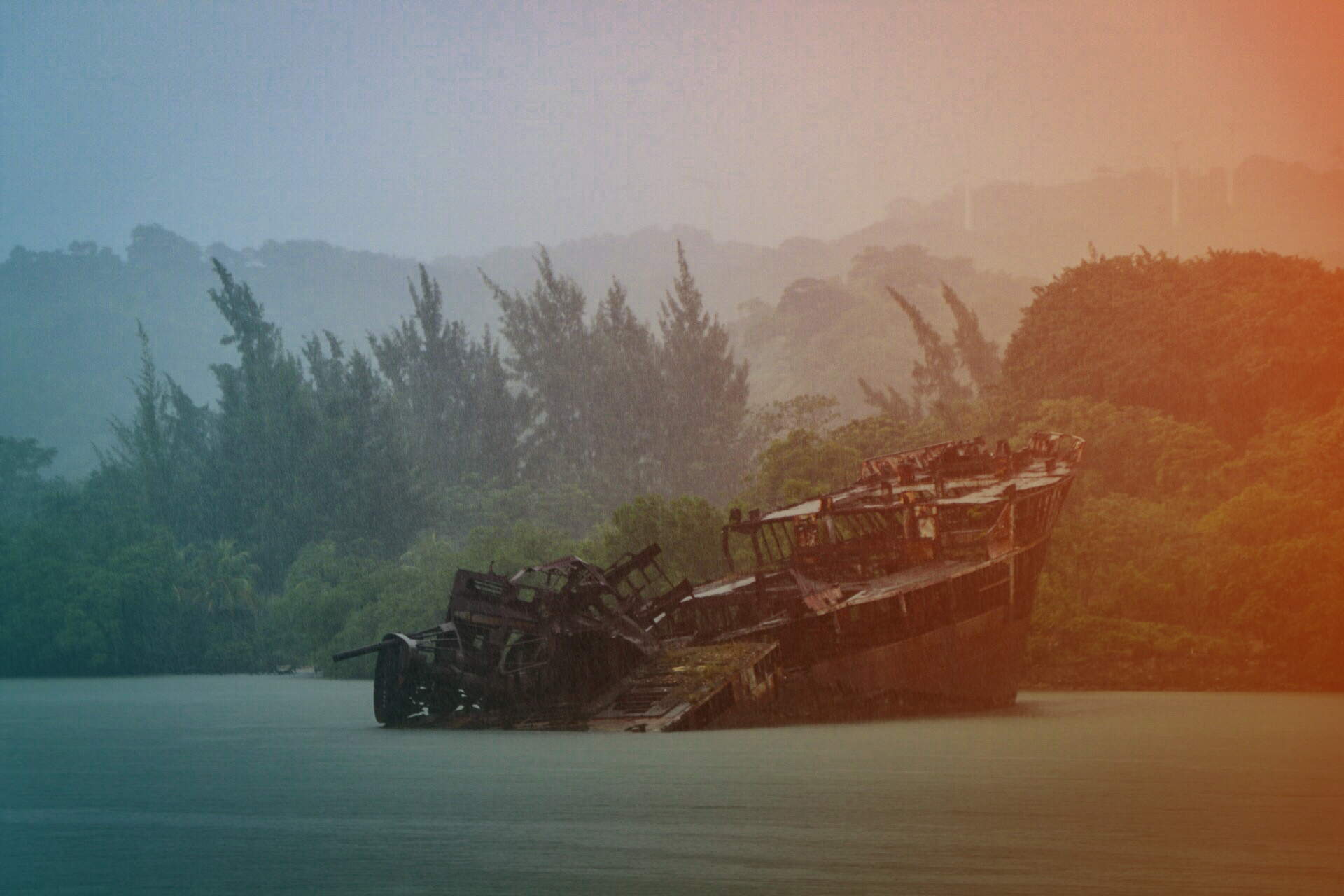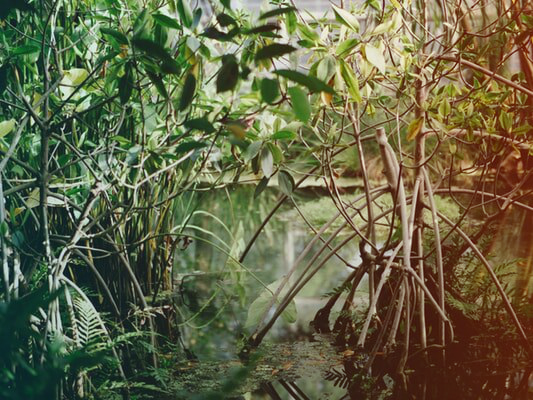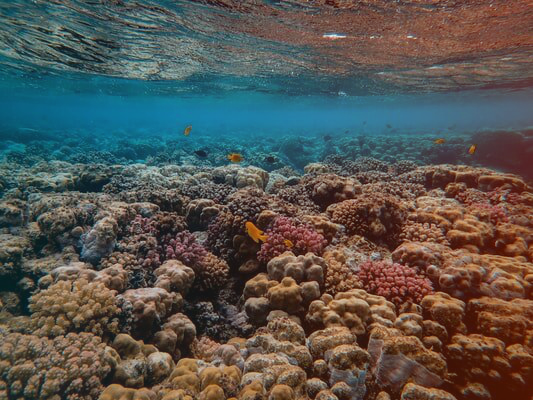
Roatan’s
Climate.
Weather & Trade Winds.
The climate in Roatan is strongly influenced by trade winds coming from the east and by cold fronts during the winter months in the northern hemisphere. Also, tropical weather waves cross directly over the island of Roatan, mainly between May and October. In recent years, the average annual precipitation has been 1343.68 mm (min: 396.40 mm, max: 2117.80 mm), with an average temperature of 28.14 ° C (min: 20.86 ° C, max: 32.70 ° C). Main months for precipitation are October, November, and December, respectively; while the driest months are April and May, respectively. The highest temperatures occur in September, August, and June, while the lowest temperatures occur in January, December, and February.
Hurricane Effect.
The three main islands have been affected by hurricanes and coral bleaching episodes, most recently in 1998 and 2005 correspondingly. Following these degradations, the skeletons of dead coral have been invaded by macro-algae. When dense, macro-algae enter into competition with surviving corals, they disturb the fixation of coral larvae.
Live Coral.
There have instances of a decrease in live coral cover and a loss of reef habitat. The living coral cover refers to the proportion of the surface of the reef covered by stony corals which form the three-dimensional framework of the Reef. McField and Kramer (2007) estimate that a "healthy reef" is the one that has a living coral cover of between 40% and 50%.
Parrotfish.
Herbivorous fish such as parrotfish (Scaridae) and surgeon (Acanthuridae) are also important to maintain the health of the reef ecosystem as they reduce the macroalgae that invade the corals and help to create an appropriate substrate for the recruitment of new corals. However, these specimens are easy prey for fishermen.
Lionfish.
Invasion
Impact on ecosystem
Lionfish Invasion.
The first lionfish (Pterois spp.) Reported in Honduras was a specimen caught on Roatan Island in May of 2009. This fish is a native species of Indo-Pacific, which has spread extensively along the West Atlantic, producing a predatory invasion at a speed of unprecedented magnitude.
Impact on ecosystem.
There is a growing concern that the presence of this fish affects the structure and function of the invaded ecosystems. A study of the area in the Caribbean revealed that between 2004 and 2010 lionfish represented 40% of the biomass of predators in the ecosystem. This increase coincided with a 65% decrease in biomass of 42 species of fish on which the lionfish feed.
Live Coral.
Coral Decrease
Coral Bleaching
Hurricane Impact
Dredging Impact
Decrease in Live Coral.
There have instances of a decrease in live coral cover and a loss of reef habitat. The living coral cover refers to the proportion of the surface of the reef covered by stony corals which form the three-dimensional framework of the Reef. McField and Kramer (2007) estimate that a "healthy reef" is the one that has a living coral cover of between 40% and 50%. Unfortunately, during this same period, the reefs around the Bay Islands had a coral coating rate of around 20%.
Coral Bleaching episodes.
Keeping within the scale of values observed today on other reefs in the Caribbean, this Coral cover is not very high. This is due in part because the reef around Roatan and the Bay Islands have undergone three episodes of "coral bleaching" in 1995, 1998 and 2005. During the first two coral bleaching (1995 and 1998) there was a coral mortality on the order of 50%. Likewise, the impact of cyclonic waves generated by Hurricane Mitch in November 1998, affected mainly the reefs of the southern coasts of the Guanaja and Roatan Islands; being the reefs of the Island of Guanaja more affected than those of Roatán.
Hurricane Impact.
The coral communities of Utila Island have few traces of Mitch's passage while the old damages caused by Hurricane Fifi are still observed today. It is important to add the impact of the sediment feathers that reached the Islands during this atmospheric phenomenon. Other natural phenomena include a series of anthropic impacts, related to the pressures derived from the high sedimentation and contamination runoff that drain into the reefs around Roatan and the Bay Islands. These pressures lead to an increase in the frequency of diseases that affect coral species.
Dredging Impact.
Finally, the reef habitat, in general, is also impacted by the extraction of coral materials through dredging. This type of practice is quite destructive to the marine environment if extractions are wildly practiced and practiced without a prior impact study. Past visits to numerous extraction sites around Roatán and other more recent visits have also caused controversy as we saw with the dredging for the cruise ship pier at Mahogany Bay. However, the latter case has been carried out under an environmental license and with the National Interest of the Honduran Congress.

Herbivorous
Organisms.
Green Algae.
Increased coverage of fleshy macro-algae and discharge of organic matter from domestic and industrial sources stimulated the development of calcareous green algae around the Bay Islands. In populated leeward areas, calcareous green algae have taken control of the background space previously covered by corals. These algae affect the quantitative distribution of many coral species which have a positive environmental impact on Roatan's reef system. These algae have not only shown a susceptibility to organic matter but also a resistance to toxic compounds (heavy metals, hydrocarbons, polyaromatic hydrocarbons and PVCs) mainly from shipyards and gas stations. These compounds, limit the development of many of the benthic organisms. The resistance of these algae to these compounds, coupled with their susceptibility to organic matter makes these algae the main competitor for the same space occupied by corals. The loss of the main reef herbivores because of the excessive fishing and the mortality of coral headband in 1983 is another cause (of a natural nature) that has caused dramatic increases in macro-alga, so much so that the macro-algae have invaded many reefs that previously dominated the corals.
Herbivorous Organisms.
Decreased abundance of herbivorous organisms on the reef corals and fleshy macro-algae are engulfed in fierce competition for space on Roatan's coral reef. Further, the presence (or absence) of herbivores eating the macro-algae can tip the scale to one side or the other. Sea urchins and fish (parrot and surgeon) are the two most important groups of reef herbivores. These fish control the abundance and composition of both coral and algae species - especially the largest macro-algae that compete directly with corals for space. Sea urchins (Diadema antillarum) are perhaps the most important herbivores in Caribbean reefs, regarding their influence on the structure and composition of the coral reef. Their presence in a moderate amount contributes to low levels of large algae, relatively few algal blooms and high levels of coralline algae - conditions that encourage coral recruitment and more abundant living coral cover. The widespread mortality of marocurridae in 1983 throughout the Caribbean coincided with a dramatic and rapid increase in macrophyte coverage in many of the reefs.
Biomass of Commercial Species.
Unsustainable fishing practices, such as over-fishing and illegal fishing are very serious threats. The greatest danger is the species that are the percoid fishes (Serranidae), snappers (Lutjianidae), the snail (Strombus gigas) and lobster (Panulirus argus). Overfishing directly affects fish stocks and larger individuals, thus reducing spawning capacity and recruitment of larvae. Box and Bonilla (2008) found that in the case of the Nassau grouper (Epinephelus striatus), the species has been decreasing in numbers due to commercial and artisanal fishing practices in Honduras. Likewise, there has been a historic decline in lobster populations (P. argus) as fishermen were harvesting and selling specimens with tails smaller than 14 cm. Throughout the region, there was a high catch rate of small lobsters. These practices have long been improved, but constant education and supervision are required to ensure lobster sales continue to meet international trade standards.




